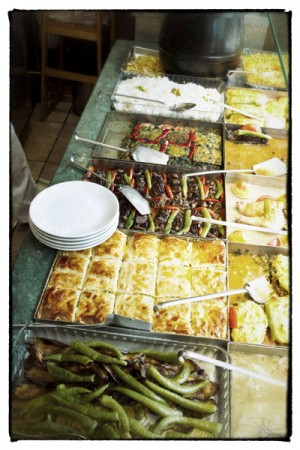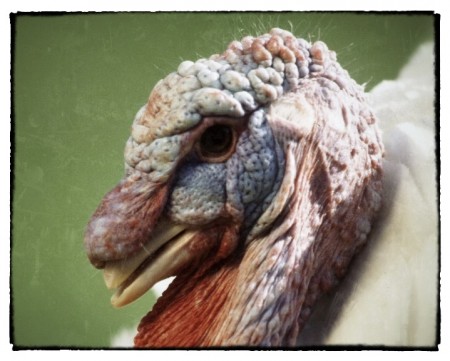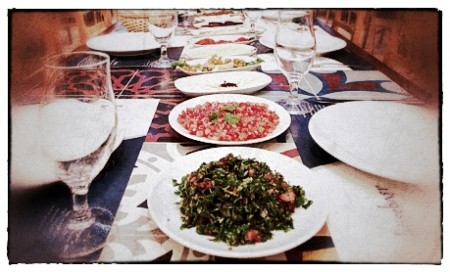
The Pudding Shop. Photo by David Lansing.
Sidar and I were wandering somewhat aimlessly around the Sultanahmet neighborhood of Istanbul. It was hot and I was getting tired and hungry.
“I have a very special place where we’re going to have lunch,” he said.
It’s taken me awhile but I now realize that when Sidar says something like this what he really means is that he has no idea where we’re going to go but he’ll figure it out as we’re walking along. We were walking up Divanyolu, a pleasant if somewhat touristy street. There were a ton of restaurants but none of them looked quite right to Sidar. Until we hit the Pudding Shop.
“Ah,” he said happily. “We should eat here. The food is very good. And besides, it is a famous café in Istanbul.”
I’d heard of the Pudding Shop. It was to Istanbul in the 60s and 70s what the Thorn Tree Café in Nairobi was in the 40s and 50s—a hang-out for expats and bohemians as well as a central meeting place. Both were also known for their message boards where you might search for a ride or a room to crash or for a long-lost friend. At Istanbul’s Pudding Shop, it also wasn’t unusual to post love and apology letters (such as the one from Megan to Malcolm in which she asked for his forgiveness and apologized for “the business down in Greece.”)
There’s a movie there, don’t you think?
The Pudding Shop is actually the nickname of the Lale Restaurant. Back in the 60s when hippies passed through here on their way to Greece or Bulgaria, if they were headed for Europe, or Iran or Afghanistan, if they were headed for Asia, they’d agree to meet up at “the pudding shop” because they couldn’t remember the real name of the restaurant close to the Haghia Sophia. They just remembered that it served cheap but excellent Turkish pudding.
So, of course, in addtion to our köfte and stuffed grape leaves, we got little dishes of asure—Noah’s pudding—which is an odd mix of beans (fava, navy, chickpeas) and grain (barley and rice) with dried figs, apricots, and raisins. Now, I don’t know what the Noah’s pudding was like at the Pudding Shop during the 60s (undoubtedly part of the attraction was that it was cheap, nutritious, and filling) but this stuff was pretty disgusting (or, in fairness, maybe my taste buds just couldn’t get past the barley-dried figs-cinnamon combo). In any case, one or two bites was plenty.
Still, it was fun just to sit here and enjoy our Efes and imagine all the freaks that had passed this way a long, long time ago.

By the way, the map of the hippie trail is courtesy of Richard Gregory who traveled, at age 19, from the U.K. to India and Nepal back in 1974 and subsequently wrote a brief memoir of the trip almost 30 years later. If you’re curious about it, you can read A Brief History of the Hippie Trail here.







Recent Comments